|
|
|
Sort Order |
|
|
|
Items / Page
|
|
|
|
|
|
|
| Srl | Item |
| 1 |
ID:
188814
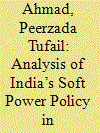

|
|
|
|
|
| Summary/Abstract |
Since 2001, India has pursued a non-military, non-coercive and co-optive (soft power) policy towards Afghanistan. India’s soft power approach of forging economic (aid), humanitarian, capacity building and institutional links vis-à-vis Afghanistan tried to win the hearts and minds of the Afghan government (pre-August 2021) and the ordinary Afghans. The data reveal that India has impacted and generated goodwill by spending billions of dollars on infrastructure. The method used in this study is primarily analytical and explanatory. The research for this study is based on both primary and secondary sources, collected from both archival and online resources. The focus of this article is to comprehensively study and evaluate the usefulness of India’s soft power policy in Afghanistan since 2001.
|
|
|
|
|
|
|
|
|
|
|
|
|
|
|
|
| 2 |
ID:
137161
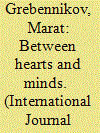

|
|
|
|
|
| Summary/Abstract |
Although Russian authorities point to the supposed success of Britain’s late colonial counter-insurgency campaigns as a model even in the 21st century, their grasp of the historical lessons is partial at best. This article considers the applicability and relevance of the counter-insurgency experience of the late British colonial state to present-day ethno-religious conflicts in the North Caucasus. The article suggests that the flexibility of British arrangements for counter-insurgency was a major factor in achieving long-term stability for the gradual transition to indigenous self-rule. The key practice was to devolve responsibility and power to indigenous elites operating with a high degree of autonomy. The article then proposes guidelines relevant to the conditions of the present and the near future that will affect prospects both for full-fledged democratization of Russia and for effective state-building, also vitally important for the development of the North Caucasus. The article concludes that the most relevant factor in the British counter-insurgency experience is to win the hearts and minds of the population. However, this cannot be achieved without a legitimate indigenous administration capable of taking full responsibility and ownership of the campaign. Otherwise, diminished political access and accountability create propitious conditions for adherents of radical movements, who are increasingly capable of and prepared to use violence and who are the only de facto rival political forces within the Russian Federation.
|
|
|
|
|
|
|
|
|
|
|
|
|
|
|
|
| 3 |
ID:
116250
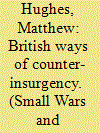

|
|
|
|
|
| Publication |
2012.
|
| Summary/Abstract |
This essay introduces the special issue, drawing together the different studies around the central theme of the nature of the force used by Britain against colonial insurgents. It argues that the violence employed by British security forces in counter-insurgency to maintain imperial rule is best seen from a maximal perspective, contra traditional arguments that the British used minimum force to defeat colonial rebellions. It shows that the use of force became more difficult especially after the Amritsar massacre in 1919. The presence of white settlers in counter-insurgencies - such as in Kenya in the 1950s - accelerated abuse by security forces and complicated the measured use of force against insurgents by the colonial state. The article concludes by drawing lessons from the British experience of counter-insurgency to unconventional military operations today, suggesting that in some situations the use of maximal force is still an option in counter-insurgency.
|
|
|
|
|
|
|
|
|
|
|
|
|
|
|
|
| 4 |
ID:
114677
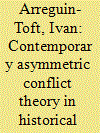

|
|
|
|
|
| Publication |
2012.
|
| Summary/Abstract |
This article offers an intellectual history of theoretical work devoted to explaining asymmetric conflict outcomes since World War II. Three factors are critical to understanding how the literature has evolved. First, the concept of "asymmetric conflict" encompasses a number of overlapping literatures, including insurgency, terrorism, counterinsurgency, and most recently, civil wars. Second, and interrelated, the field of inquiry has been unproductively divided between military and academic thinkers, with insufficient engagement between the two communities. Third, the popularity of the field of inquiry following the events of September 11, 2001, and the subsequent American-led military operations in Afghanistan (2001) and Iraq (2003) have resulted in analyses that are empirically rich, but have provided little in the way of theoretical advances. The conclusion offers an overall assessment of the field of inquiry into asymmetric conflict outcomes, suggested directions for future research, and a table of major contributors to the literature, their key questions, case universes, intended contributions, and theoretical limitations.
|
|
|
|
|
|
|
|
|
|
|
|
|
|
|
|
| 5 |
ID:
124416
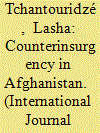

|
|
|
|
|
| Publication |
2013.
|
| Summary/Abstract |
After a decade of bloodshed and suffering, the western-sponsored coalition in Afghanistan led by the North Atlantic Treaty Organization (NATO) has failed to win the "hearts and minds" of locals. The tremendous sacrifices by the United States, Canada, and their allies have produced some tangible results, but steps forward have been made on the shaky ground of overall insecurity and violence and have primarily been associated with certain urban developments, while most of Afghanistan remains deeply rural in its feudal social order and conservative Islamic traditions. Although the Canadian experience in Afghanistan has been very different in its scope and objectives from the Soviet Union's operations of the 1980s, certain important parallels, particularly concerning counterinsurgency, can be discerned.
|
|
|
|
|
|
|
|
|
|
|
|
|
|
|
|
| 6 |
ID:
082239
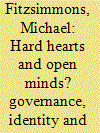

|
|
|
|
|
| Publication |
2008.
|
| Summary/Abstract |
The premise of most Western thinking on counterinsurgency is that success depends on establishing a perception of legitimacy among local populations. The path to legitimacy is often seen as the improvement of governance in the form of effective and efficient administration of government and public services. However, good governance is not the only basis for claims to legitimacy, especially in environments where ethnic or religious identities are politically salient. Some experience in Iraq suggests that in environments where such identities are contested, claims to legitimacy may rest primarily on the identity of who governs, rather than on how whoever governs, governs. This article outlines the intellectual foundations of existing policy and doctrine on counterinsurgency, and argues that development and analysis of counterinsurgency strategy would benefit from a greater focus on the role of ethnic and religious identity in irregular warfare.
|
|
|
|
|
|
|
|
|
|
|
|
|
|
|
|
| 7 |
ID:
189016
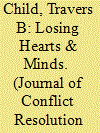

|
|
|
|
|
| Summary/Abstract |
“Hearts and minds” theory contends development aid strengthens community support for counterinsurgents by providing jobs and public goods. Based on field interviews in Kabul, we develop an alternative theoretical framework emphasizing instead the ideological preferences of civilians. In our model, some aid projects are ideologically contentious while others are benign. Given a mix of foreign aid, each civilian supports either the counterinsurgents or rebels, depending on his/her idiosyncratic preferences. In this setting, greater provisions of aid can actually erode community support. Donors therefore calibrate the mix of foreign aid to appease population groups with relatively strong ideological sensibilities. Individual-level analysis based on unique Afghan data substantiates key features of our theory. Benign projects lead to favorable opinions of development, while contentious aid has the opposite effect. Moreover, favorable opinions of development are associated with stronger support for government and counterinsurgents, and weaker support for rebels.
|
|
|
|
|
|
|
|
|
|
|
|
|
|
|
|
| 8 |
ID:
109958
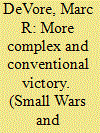

|
|
|
|
|
| Publication |
2012.
|
| Summary/Abstract |
Following the emergence of a communist regime in South Yemen and the multiplication of subversive movements in the United Kingdom's Gulf protectorates, British policymakers genuinely feared the spread of communism throughout southern Arabia. Defeating the People's Front for the Liberation for the Occupied Arabian Gulf (PFLOAG) insurgency in Oman's Dhofar province was considered central to preventing such an outcome. In their pursuit of victory, British officers overthrew the sultan of Oman, escalated the war by conducting attacks in South Yemen, and, ultimately, appealed to Islam as a means of rallying support against communism. However, lessons learned in previous counterinsurgencies (Malaya, Kenya, and Borneo) proved of only limited value in Oman's physical and cultural environment. Unfortunately, none of these measures worked as anticipated. Only Iran's direct military intervention and the dramatic growth of Oman's financial resources after the 1973 oil crisis provided the resources to conduct large-scale offensive operations. Even so, victory was only achieved in 1975 because the rebellion's leaders unwisely attempted to oppose the Anglo-Omani offensives conventionally.
|
|
|
|
|
|
|
|
|
|
|
|
|
|
|
|
| 9 |
ID:
116258
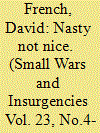

|
|
|
|
|
| Publication |
2012.
|
| Summary/Abstract |
At the beginning of the twenty-first century the British Ministry of Defence prided itself that it was the Western world's leader in the conduct of counter-insurgency operations. Drawing on the lessons it had learnt during Britain's wars of decolonisation, it believed that it had discovered ways of waging wars among the people that enabled it to use force effectively but with discrimination, distinguishing between the 'guilty' few and the 'innocent' many. This article will survey these assertions in the light of historical evidence drawn from 10 of those campaigns: Palestine, Malaya, the Suez Canal Zone, Kenya, British Guiana, Cyprus, Oman, Nyasaland, Borneo, and Aden. It will suggest that the real foundation of British counter-insurgency doctrine and practice was not the quest to win 'hearts and minds'. It was the application of wholesale coercion.
|
|
|
|
|
|
|
|
|
|
|
|
|
|
|
|
| 10 |
ID:
128231
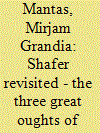

|
|
|
|
|
| Publication |
2013.
|
| Summary/Abstract |
The comprehensive approach, also known as the integrated approach, is foundational to the strategies of the Western countries operating in south Afghanistan. It builds on the same premise as the hearts and minds (HAM) theory: by providing security and basic needs to the population, support is taken away from insurgents. The assumption that a (fragile) state will be able (with support of foreign troops and organisations) to provide basic services, security, and economic prosperity, which was questioned and critiqued by Michael Schafer over two decades ago, is still part of the contemporary concept and seems to remain uncontested. The objective of this article is to test Shafer's claims about the perseverance of what he coined 'the deadly paradigms of counterinsurgency' against the British and Dutch experiences in south Afghanistan starting in 2005.
|
|
|
|
|
|
|
|
|
|
|
|
|
|
|
|
| 11 |
ID:
191051
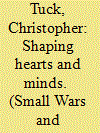

|
|
|
|
|
| Summary/Abstract |
For Western militaries, the choice between enemy-centric and population-centric approaches to unconventional warfare is really no choice at all. Contemporary counterinsurgency doctrines are clear on the decisive importance of hearts and minds in delivering success: in these conflicts, the population is the prize. As this article identifies, however, context may limit in important ways the relevance of many hearts and minds activities. Despite the scale of Commonwealth military success against Indonesia during Operation Claret in 1965–66, and despite the declared importance of hearts and mind activities in support of this success, the specific context that existed during the campaign limited the extent to which hearts and minds could exert a decisive impact. In particular, the limited nature of Commonwealth objectives, which did not seek to change the political ownership of the border area, meant that the local population could not, in the long term, be protected from the consequences of choosing to side with Commonwealth forces. Therefore, despite often being well disposed to Commonwealth troops, rational concerns for their own well-being limited the willingness of border villagers to provide overt help.
|
|
|
|
|
|
|
|
|
|
|
|
|
|
|
|
| 12 |
ID:
142615
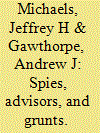

|
|
|
|
|
| Summary/Abstract |
Vietnam was a complex conflict, which historians and political scientists have struggled to understand. Some of the bitterest disputes in the historiography revolve around the US approach to counterinsurgency in Vietnam. Many different facets of the war have received the attention of filmmakers, and an examination of their work suggests new ways of thinking about the conflict. This article considers film portrayals of three phases of the Vietnam War – firstly, the early period of ‘political action’, then the advisory period, and finally the Americanization of the war after 1965. It suggests that by examining the experiences of participants in each of these phases, Vietnam War cinema helps to illustrate the problems that faced various American approaches to counterinsurgency in the conflict. Combined with the importance of films in determining popular perceptions of both historical conflicts and counterinsurgency in general, it suggests that they are worthy subjects of study and critique.
|
|
|
|
|
|
|
|
|
|
|
|
|
|
|
|
| 13 |
ID:
186862
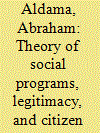

|
|
|
|
|
| Summary/Abstract |
Aid and social programs are commonly used to fight insurgencies. However, sometimes they fail to achieve their goal of increasing citizen cooperation with the state. I propose a series of game-theoretic models that focus on the strategic interaction between a state and a citizen in the face of a challenge to the state’s monopoly of power by an insurgency. I argue that even if the provision of aid or social programs increases citizens’ intrinsic motivation to cooperate with the state, it does not necessarily translate into more cooperation. I show that citizen cooperation depends on whether the increase in the provision of aid is accompanied by an increase in the use of violent or hard tools by the state, the citizens’ expectation of future rewards, and the insurgency’s response. The models thus provide a rationale for why even if social programs increase state legitimacy, they may fail to increase citizen cooperation.
|
|
|
|
|
|
|
|
|
|
|
|
|
|
|
|
| 14 |
ID:
128230
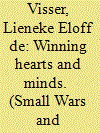

|
|
|
|
|
| Publication |
2013.
|
| Summary/Abstract |
Efforts at winning hearts and minds (WHAM) impact on and are affected by perceptions of legitimacy. In the Namibian war for independence (1966-1989) efforts of the South African counterinsurgent forces at winning hearts and minds focused mainly on persuading the population to cooperate in exchange for material benefits and services. The article demonstrates that this successfully contributed to a dimension of legitimacy that is conceptualized as pragmatic legitimacy. However, other dimensions of legitimacy are identified in which the South Africans were lacking, that is in moral, legal, and identity-based legitimacy. Furthermore, in areas where control was contested and where the population could not be shielded from insurgent intimidation, it is argued that the effects of coercion outweighed legitimacy altogether.
|
|
|
|
|
|
|
|
|
|
|
|
|
|
|
|
|
|
|
|
|